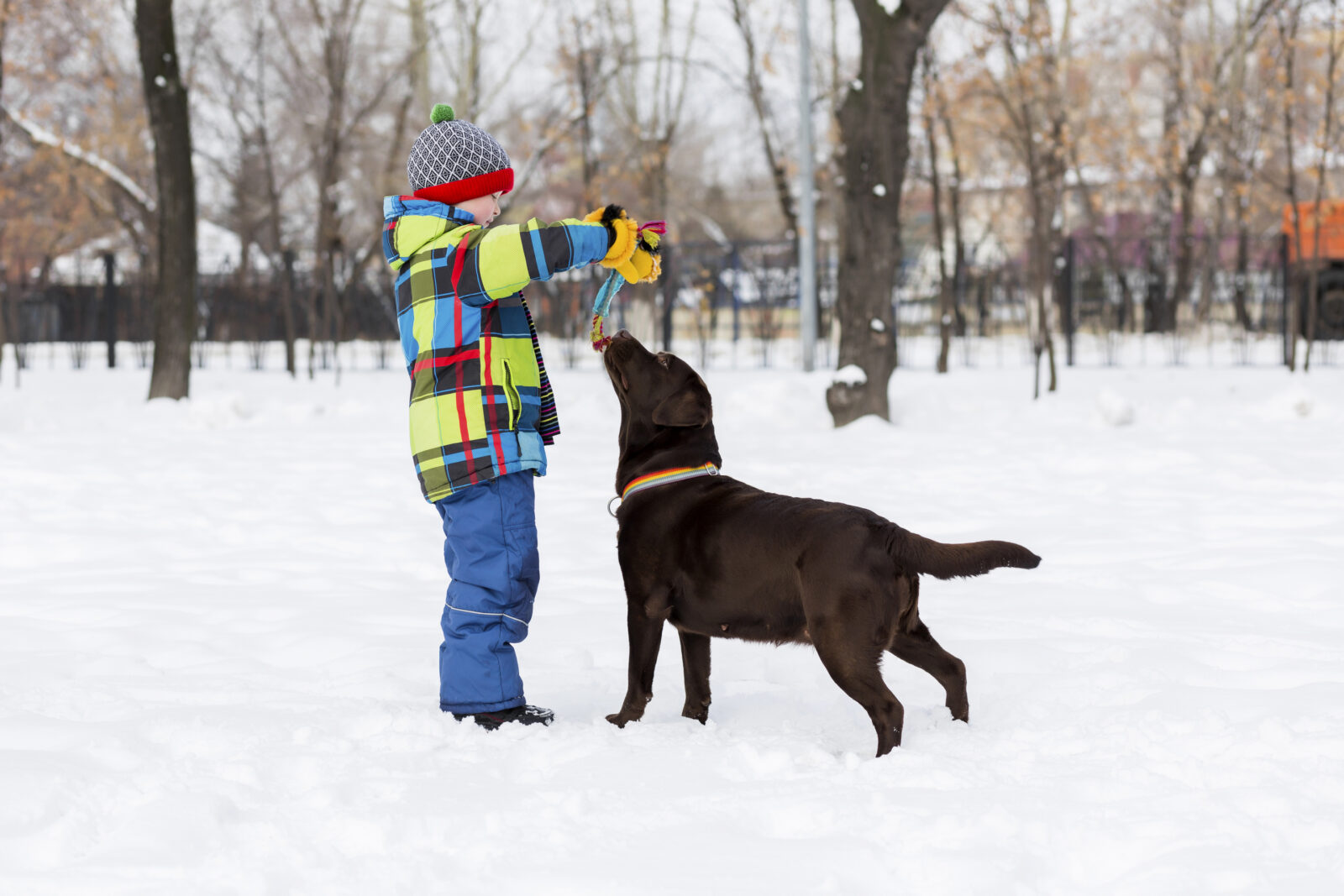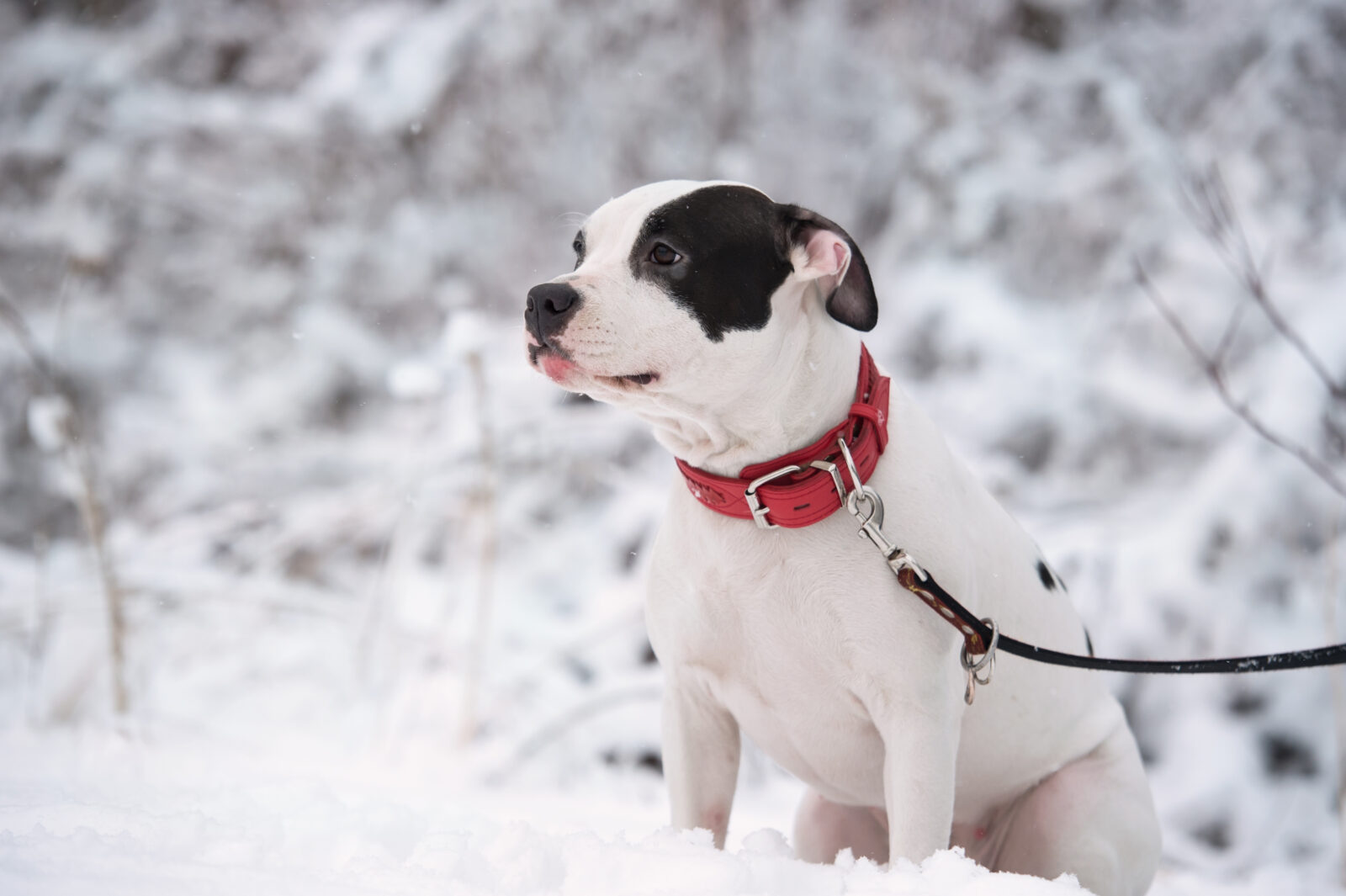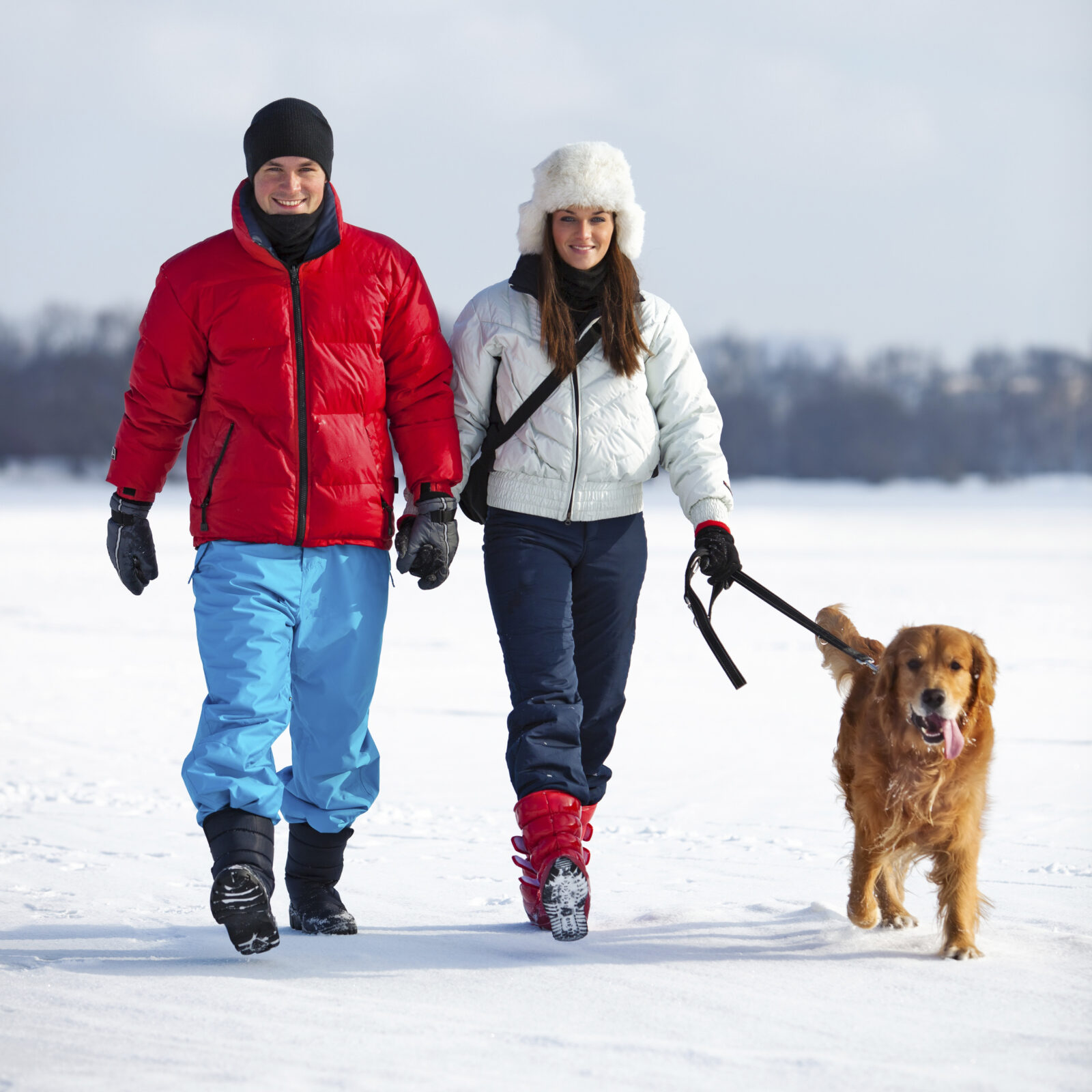When the weather becomes cold, it’s time to pull out warmer clothes and cold weather gear for your family. Warm weather gear isn’t just for the humans in your life; it also includes cold-weather gear for your dog to not only keep your four-legged best friend warm but to also avoid frostbite in dogs. Sweaters and coats are great for brief trips outside, but booties or shoes can help protect your pup’s feet if you spend more time outside or go on regular walks. Prolonged exposure to temperatures below freezing might raise the risk of frostbite, and frostbite in dogs is a serious matter. So, because the cold season is officially here, let’s look at what causes frostbite in dogs, and how you can avoid it.
Frostbite in Dogs FAQ’s and Treatment
What is Frostbite in Dogs?
Frostbite in dogs is a form of skin damage that happens with exposure to temperatures below freezing for an extended amount of time. This is because exposure to temperatures below freezing causes your dog’s tiny arteries to contract in an attempt to preserve their core body temperature, pulling heat away from cooler parts of the body. As a result, the blood flow to extremities such as paws, ears, and tail may be reduced, resulting in tissue injury and tissue freezing.
Frostbite is more likely in dogs with medical disorders that reduce blood flow, such as diabetes and heart disease. In addition, senior dogs, puppies, and dogs with short or damp coats are all more prone to frostbite.
What are the Signs of Frostbite I Should Watch for in My Dog?
There are many different signs of frostbite that are apparent in dogs. However, a few signs to watch for are as follows:

Bluish Skin Coloring
The skin becoming blue is one of the most common (and initial) indications of frostbite in dogs and humans alike. However, it may also seem gray with a blue tint.
If your pup has a double coat or long hair, it may be difficult to see their skin. Split the fur in various places and check for this symptom of frostbite if you believe he is suffering from this disease.
Cold to the Touch
Because frostbite causes skin damage from the cold, your dog’s skin temperature will decrease substantially. Unfortunately, this implies that your dog’s skin will remain chilly to the touch and will appear much colder than it should after being outside in lower temperatures.
Examine your dog’s skin in different places to assess how chilly it is. For example, does it warm up fast when you touch it, or does it stay cold for an extended period despite your body heat? It is essential to consider all of these criteria when determining whether or not your dog has frostbite.
Swelling and Pain
As your dog’s skin freezes due to exposure to extreme cold or long periods of exposure to cold temperatures, it swells. The swelling may be minor and difficult to detect; on the other hand, it may become severe in rare cases.

This frozen skin will also be highly uncomfortable to touch. If your dog exhibits some of the additional symptoms described below, as well as whimpering in pain or becomes hostile when you try to touch his skin, he may be suffering from frostbite.
Blistered Pads or Skin
When frostbite happens, the skin freezes, and the tissue is severely injured, which frequently results in blistering or ulceration of the afflicted areas. So if you see large blisters where there were previously none, and your dog is extremely cold to the touch, he may have frostbite.
However, depending on the severity of the disease and the amount of time exposed to frigid temperatures, blisters may not always emerge. This symptom might indicate something else, so search for it in connection with some of the other items on this list.
Blue to Black
The more prolonged skin exposure to cold and harsh temperatures, the more tissue dies. The skin will no longer seem blue and appear black when enough tissue has gone. The black color indicates that the skin is entirely dead and cannot be rescued; it is a sign of severe, late-stage frostbite.
If you observe this symptom in your dog, she will require emergency veterinarian attention right away. This skin blackening, also known as necrosis, may progress even if he is no longer exposed to frigid temperatures, and she will require medical attention to halt it.
Issues With The Paws, Tail, or Ears
Frostbite is typically seen in dogs on the paws, ears, and tail. These are the regions of the body that are most vulnerable to cold and may become wet under cold temperatures. The ears and tail may take some time to develop indications of frostbite, but the paws will almost certainly show signs immediately.
When your dog walks outside in the winter, please pay particular attention to these portions of her body. If it’s raining or snowing outdoors, be sure to dry her ears, paws, and tail often. In addition, reduce the amount of time your dog spends outside in the cold.
Some indications of frostbite in dogs develop immediately after exposure to low temperatures, whereas others show a few days later.

Frostbite in Dogs Treatment
Frostbitten regions might continue to cause pain for your dog if not treated. Necrotic tissue can slough and flake off, allowing infected patches to form. Frostbite is diagnosed when symptoms match a clinical history of extended exposure to cold temperatures. If you think your dog has frostbite, contact your veterinarian straight away so they may check the skin and determine if extra therapy, such as antibiotics and pain relievers, is required.
Blood tests can also check for indicators of internal organ damage. Wrap your dog in warm blankets and towels before transporting him to the vet’s office to increase his body temperature. To warm up the towels, place them in the dryer for a few minutes beforehand.
If your dog becomes wet, gently towel-dry him but do not touch his skin, which can get red and irritated as it thaws. You may want to consider using warm water bottles to help him. Avoid using electric blankets and heating pads as they may become too hot, scorching the already wounded skin. Blow dryers can also get too hot.
Topical ointments can help with mild frostbite in tiny regions. However, more severe frostbite may necessitate hospitalization, warming equipment, injectable antibiotics, and pain relievers. In extreme cases, such as near the tip of the tail, it may require amputation.
Cold Weather Preparation for Your Dog
Sweaters and coats can help your dogs keep their core body temperature stable in the cold. Dog booties or shoes help protect the paws on snowy or slippery terrain. Unless your dog is acclimated to these temps, staying outside for longer than 20-30 minutes is not advisable. If you regularly leave your dog outside, make sure he has a warm shelter or bring him inside when the weather drops below 40 degrees Fahrenheit.

Latchkey Pets Last Thoughts on Frostbite in Dogs
Frostbite is a painful medical ailment, and with the proper care and preparation, the condition can easily be avoided. Monitor the temperature outside, and only let your dog go outside for a maximum of thirty minutes at a time. If you feel your dog has frostbite, try to warm him up as best you can and take him to his veterinarian as soon as possible.
Remember, if the weather is not comfortable for you, it is probably not comfortable for your dog either. Take every precaution to ensure your dog’s health and safety by limiting the amount of outside playtime when it is cold. We hope the above tips and advice on frostbite in dogs help you this winter. Latchkey Pets is here to help in a variety of other ways including daytime dog walking services and vacation pet sitting services, all a phone call away!
